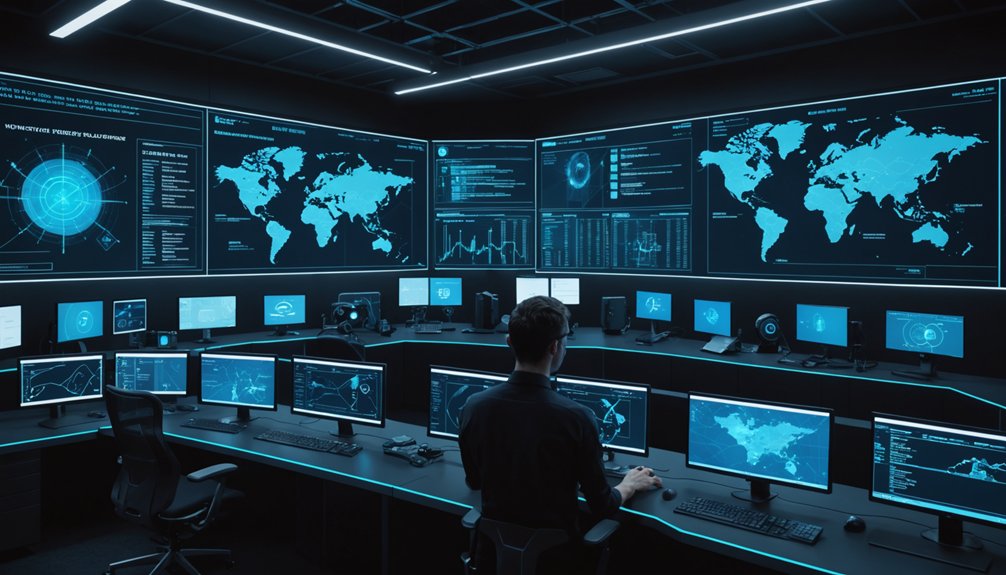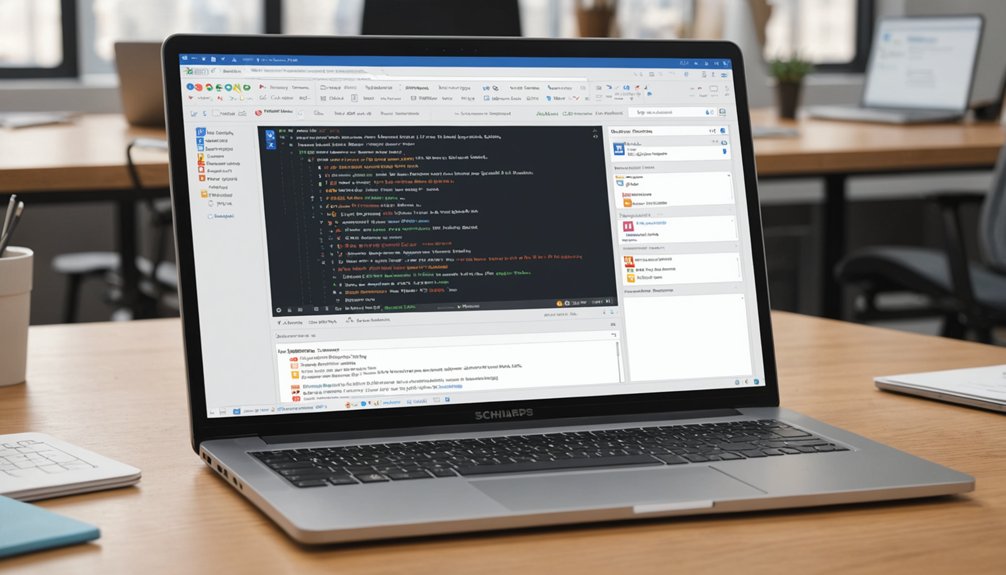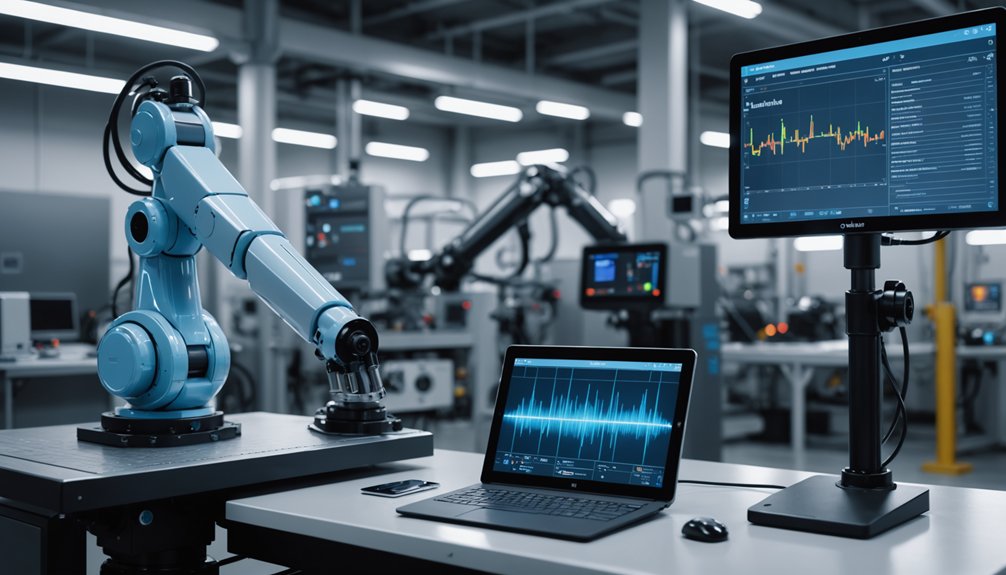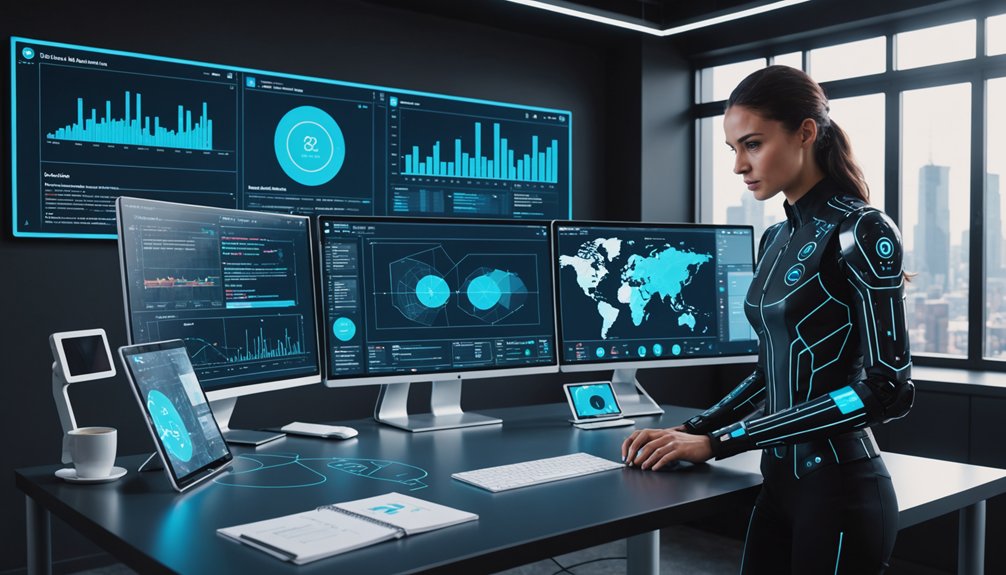AI is revolutionizing cybersecurity threat detection through lightning-fast data analysis and pattern recognition. These systems never sleep, constantly scanning networks for suspicious activities that humans might miss. Machine learning algorithms improve with each attack, transforming security from reactive to predictive. Sure, challenges exist—quality data requirements, false positives, adversarial attacks. But as threats evolve, AI’s ability to provide real-time protection makes it indispensable. The cybersecurity battlefield has changed forever.
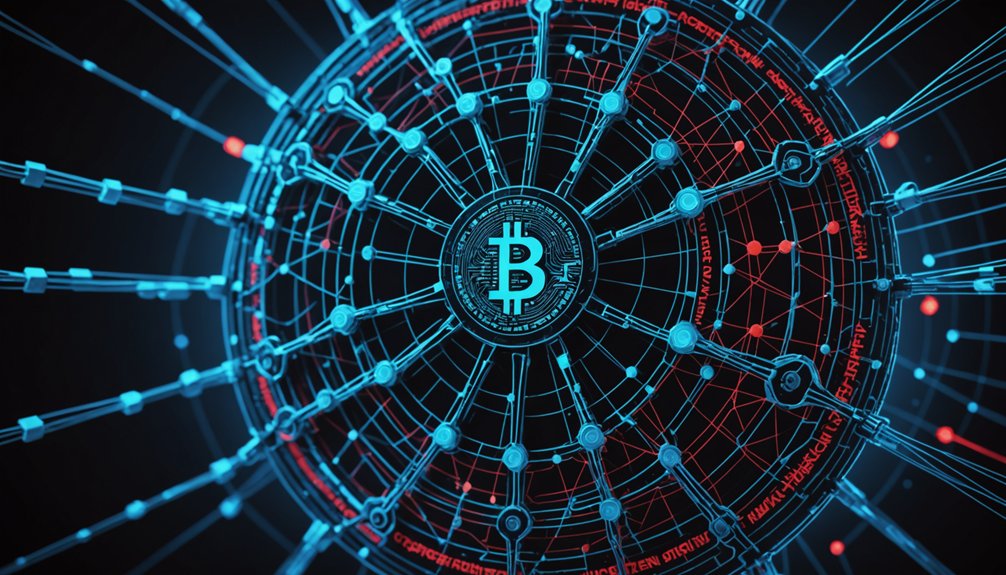
While hackers grow increasingly sophisticated in their attacks, artificial intelligence has emerged as the cybersecurity hero we didn’t know we needed. It’s revolutionizing how organizations detect and respond to threats. No longer stuck in the stone age of manual monitoring, companies now deploy AI systems that can analyze massive datasets in seconds. These systems don’t get tired. They don’t take coffee breaks. They just work.
The magic happens through pattern recognition. AI examines network traffic and user behavior, flagging anything suspicious before humans even notice something’s off. Traditional security methods? They’re like bringing a knife to a gunfight. AI brings the entire arsenal. Through machine learning algorithms, these systems continuously improve their threat detection accuracy. They learn from every attack, every false alarm, every successful defense. Solutions like Darktrace Enterprise demonstrate how AI can effectively identify patterns indicating potential threats.
AI sees what humans miss, transforming security from reactive defense to predictive protection.
Real-time analysis is where AI really shines. While you’re reading this sentence, AI systems worldwide are scanning millions of data points for potential threats. They’re not just reactive—they’re proactive. They predict vulnerabilities before hackers exploit them. Talk about staying one step ahead. By leveraging contextual data analysis, these systems significantly reduce false positives while maintaining high detection accuracy.
Of course, it’s not all sunshine and rainbows. AI systems need quality data to function properly. Garbage in, garbage out. False positives remain an issue, sometimes causing more headaches than actual threats. And let’s not forget about adversarial attacks specifically designed to fool AI systems. Ironic, isn’t it? Using AI to trick AI.
The future looks promising, though. As AI technologies mature, we’re seeing more sophisticated automation and integration with emerging technologies like IoT and cloud computing. AI-powered firewalls and antivirus software are becoming standard practice across industries. Beyond detection, modern AI solutions provide valuable actionable recommendations that help security professionals make informed decisions quickly. AI-driven systems also enable behavioral analysis that identifies deviations from normal user patterns to detect sophisticated malicious activities.
The cybersecurity landscape is evolving at breakneck speed. Hackers aren’t slowing down. Neither is AI. In this digital arms race, artificial intelligence isn’t just a nice-to-have—it’s becoming essential. The battle continues. Who will win? Only time will tell.
Frequently Asked Questions
How Costly Are Ai-Powered Cybersecurity Solutions for Small Businesses?
AI-powered cybersecurity solutions hit small businesses’ wallets differently. Pricing ranges from $10 to $100 per user monthly.
Some affordable options exist, like CrowdStrike’s Falcon Go at $59.99 per device yearly. Extensive services? Those’ll run $50 to $200 monthly per user.
Cost remains a challenge despite these options. Smart businesses carefully select tools and leverage vendor support.
Open-source alternatives help the truly budget-conscious. Not cheap, but necessary these days.
Can AI Cybersecurity Systems Work Effectively Without Human Oversight?
AI cybersecurity systems can operate autonomously, but they’re far from perfect without humans in the loop.
They excel at real-time monitoring and threat detection—faster than any human could.
But AI has blind spots. Bias creeps in. Novel threats confuse them.
Human oversight remains essential for defining parameters, validating alerts, and making judgment calls.
The future? Likely hybrid solutions. Machines do the heavy lifting, humans provide the common sense.
What Training Do Security Teams Need to Manage AI Tools?
Security teams need basic programming skills, AI principles, and cybersecurity fundamentals to manage AI tools effectively. Period.
Training must cover machine learning basics, GANs, and feature engineering. They can’t just wing it.
Practical experience with model development and evaluation is essential, along with network anomaly detection skills.
Continuous learning is non-negotiable—AI evolves fast, and yesterday’s training won’t cut it tomorrow.
How Do Privacy Regulations Impact Ai-Based Threat Detection Implementation?
Privacy regulations create a minefield for AI threat detection. They force developers to jump through hoops, implementing privacy-preserving techniques like federated learning.
Cross-border data rules? A nightmare. Organizations must navigate inconsistent jurisdictions, sometimes sacrificing detection capabilities for compliance.
GDPR and similar laws don’t care about your security needs—they demand transparency about data usage. The result? Slower implementation and constant redesigns.
Privacy and security: eternal frenemies in the digital world.
What Cybersecurity Risks Do AI Systems Themselves Introduce?
AI systems bring their own cybersecurity baggage.
They’re prime targets for adversarial attacks, where hackers deliberately fool algorithms into making mistakes.
Data poisoning? A real threat.
These systems can leak sensitive information embedded in their training data, too.
Then there’s the irony – AI helps create more sophisticated malware.
Over-reliance on AI security tools leaves blind spots when traditional methods get ignored.
No system is foolproof.
